Share the post "Texas Vehicle Inspection (Good For/Fails For)"
If you’ve recently gone through the arduous process of vehicle inspection in Texas, one question returns to mind: how long is a Texas vehicle inspection good for?
Texas vehicle inspections last two years for newly bought vehicles and one year for used/old cars. If a vehicle fails a check, it will receive a “failed inspection” sticker and must return the vehicle for re-inspection within 20 days. You can fail an inspection a total of two times before fees are incurred.
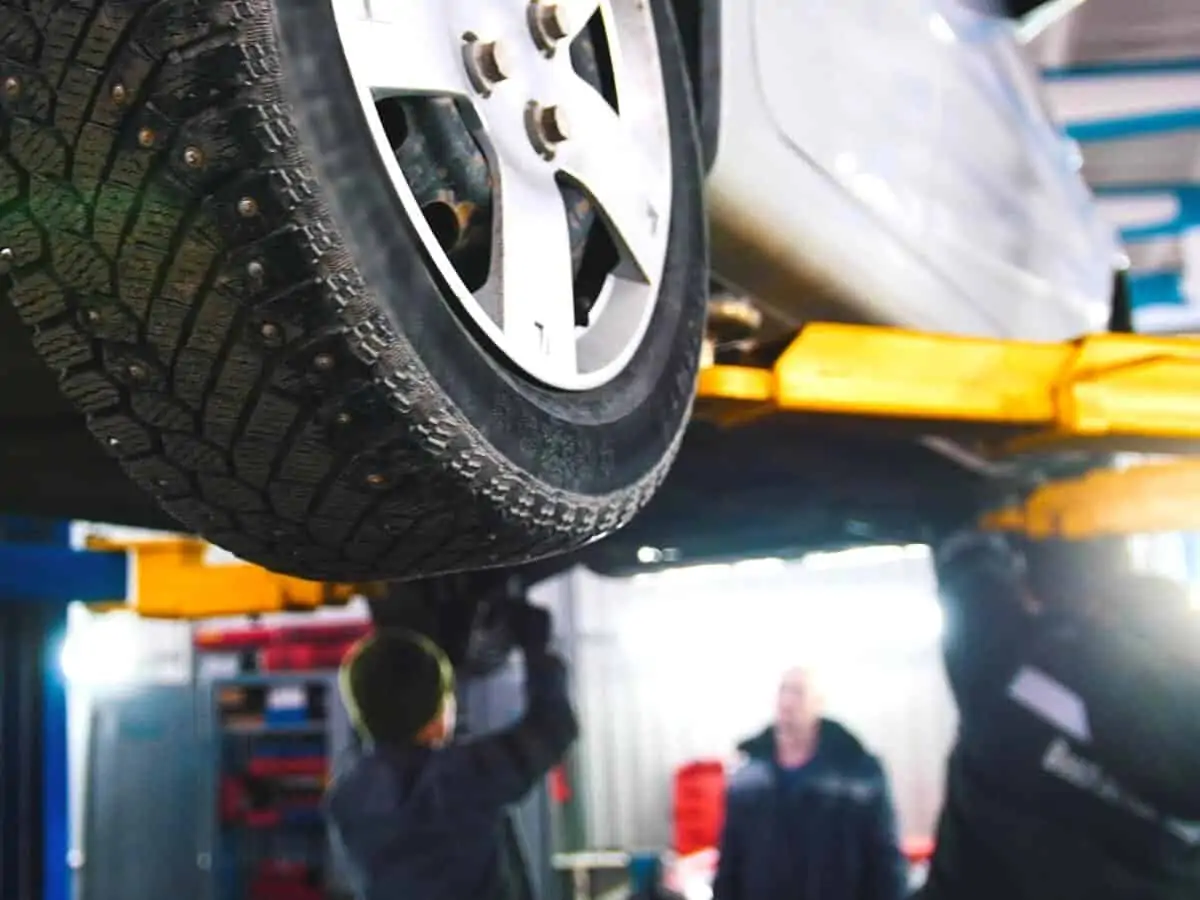
- Texas Vehicle Inspection
- Process of Getting a Vehicle Inspection Appointment
- How to Prepare Your Vehicle for A Vehicle Inspection
- What Happens During a Texas Vehicle Inspection?
- How Much Does Vehicle Inspection Cost in Texas?
- What Happens if You Fail an Inspection?
- Reasons that Instantly Prevent You from Passing a Vehicle Inspection
- Consequences of Driving with An Expired Inspection
- Regulations for Commercial Vehicles Undergoing Inspection
- Next Step for Your Vehicle Inspection
- Driving Inspection FAQs
Texas Vehicle Inspection
Vehicle inspections in Texas aren’t as straightforward as we’d like them, so it’s only natural to be confused about how long they’re good. The short answer is this: vehicle inspections are good for one year or two with an initial assessment.
Vehicle inspections must be passed within 90 days before the registration or renewal of your vehicle, as stated by the Texas Department of Public Safety.
What’s the Purpose of a Vehicle Inspection?
Your vehicle must pass an official state safety and emissions yearly to legally drive on Texas state roads. This inspection ensures that every vehicle is safe and fit on the road.
Inspections also allow vehicle owners to check the state of their vehicles and fix any problems they may not have noticed before the review. This saves the owner from costly fixes and repairs that may lead to more significant issues if not immediately considered.
Process of Getting a Vehicle Inspection Appointment
In Texas, vehicle inspections are mandatory for all motor vehicles registered in the state. Getting a vehicle inspection appointment in Texas is relatively straightforward, but following the steps correctly is essential to ensure compliance with state laws. Here is a detailed guide:
- Determine Inspection Requirements: Before scheduling an appointment, determine your vehicle’s required inspection. In Texas, most vehicles are subject to an annual safety inspection, while those in certain counties also need to pass an emissions test.
- Find a Certified Inspection Station: Texas has numerous certified vehicle inspection stations. You can find a nearby station by visiting the Texas Department of Public Safety (DPS) website or using an online search tool provided by the Texas Department of Motor Vehicles (TxDMV). These stations include various auto repair shops, oil change locations, and other automotive service centers.
- Schedule an Appointment (Optional): While many inspection stations accept walk-in customers, scheduling an appointment’s often more convenient. This ensures you won’t have to wait long, especially during busy times. Contact the inspection station directly to inquire about appointment availability. Note that not all stations offer the option to schedule appointments.
- Prepare Your Vehicle for Inspection: Before taking your vehicle for inspection, make sure it is in good condition. This includes checking the lights, brakes, horn, mirrors, seat belts, and tires, among other things. For vehicles requiring an emissions test, ensure that the vehicle has been driven for at least a few days after resetting the check engine light or making emissions-related repairs.
- Bring Necessary Documents: When you go for your inspection, bring your vehicle registration, proof of insurance, and any necessary payment. Inspection fees vary depending on the county and type of assessment required.
- Undergo the Inspection: During the inspection, a certified inspector will check various components of your vehicle to ensure they meet state safety and emissions standards. The inspection typically takes about 15 to 30 minutes.
- Receive Inspection Report: If your vehicle passes the inspection, you’ll receive a report and a sticker to be placed on your windshield. This sticker indicates that your vehicle is compliant with Texas inspection requirements.
- Renew Your Vehicle Registration: Remember that a passed inspection is required for vehicle registration renewal in Texas. You can renew your registration online, by mail, or at your county tax office.
Getting your vehicle inspected on time is essential, as driving with an expired inspection sticker can result in fines and penalties. Also, remember that vehicle inspection requirements can vary depending on the county and the age of the vehicle, so it’s a good idea to check the latest requirements on the TxDMV website.
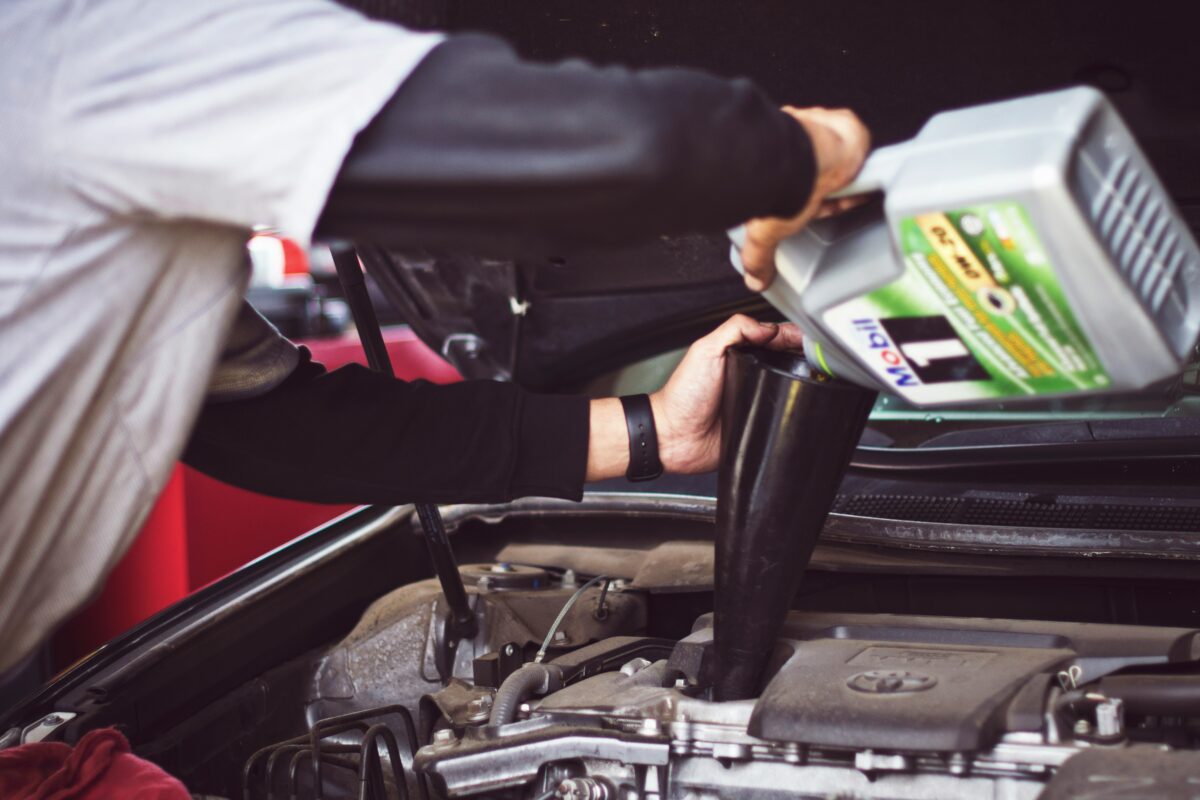
How to Prepare Your Vehicle for A Vehicle Inspection
Preparing your vehicle for a Texas vehicle inspection is crucial to ensure it passes the mandatory safety and, where applicable, emissions tests. Proper preparation can help avoid the inconvenience of a failed inspection. Here’s a step-by-step guide to get your vehicle ready:
General Preparation
- Documentation: Ensure you have your current vehicle registration and proof of insurance. These documents are typically required at the time of inspection.
- Clean Your Vehicle: While cleanliness isn’t a criterion for passing, a clean vehicle may make the inspection process smoother, especially if the inspector needs to access certain areas of the car.
- Check the Dashboard: Make sure no warning lights (like the check engine light) are on. If they are, diagnose and address the problem before the inspection.
Safety Inspection Checklist
- Brakes: Test your brakes, including the parking brake, for proper function and responsiveness.
- Lights: Verify that all lights are working. This includes headlights, brake lights, turn signals, reverse lights, and license plate lights.
- Horn: Ensure the horn works consistently and is audible.
- Mirrors: All mirrors should be intact and adjustable. This includes rearview and side mirrors.
- Windshield Wipers: Test the wipers to ensure they operate effectively and replace them if worn out.
- Seat Belts: Check all seat belts for tears or malfunctioning buckles and ensure they retract and extend properly.
- Tires: Inspect tire tread depth and look for any signs of excessive wear or damage. Also, ensure tires are properly inflated.
- Windshield and Windows: No significant cracks or damage should obstruct the driver’s view.
- Exhaust System: Check for excessive noise, leaks, or damage to the exhaust system.
- Steering Mechanism: The steering system should be responsive without excessive play or strange noises.
Emissions Test Preparation (if applicable)
- Check Engine Light: The check engine light should be off. If it’s on, it usually indicates an emissions-related problem.
- Emissions Equipment: Ensure that all emissions equipment is present and functioning. This includes items like the catalytic converter and EGR valve.
- Drive the Vehicle: If you recently cleared your check engine light or disconnected the battery, drive the vehicle for a few days before the inspection. This allows the onboard diagnostics to complete their readiness checks.
- Fuel Cap: Make sure the fuel cap is present, fits properly, and is not damaged.
Day of the Inspection
- Arrive with a Warm Engine: Drive the car for at least 15 minutes before the inspection. A warm engine can help in passing the emissions test.
- Follow Instructions: During the inspection, follow the instructions given by the inspector.
By following these steps, you can increase the likelihood of your vehicle passing the Texas vehicle inspection on the first try. Remember, these inspections are designed to ensure vehicles on the road meet basic safety and environmental standards, contributing to overall road safety and air quality.
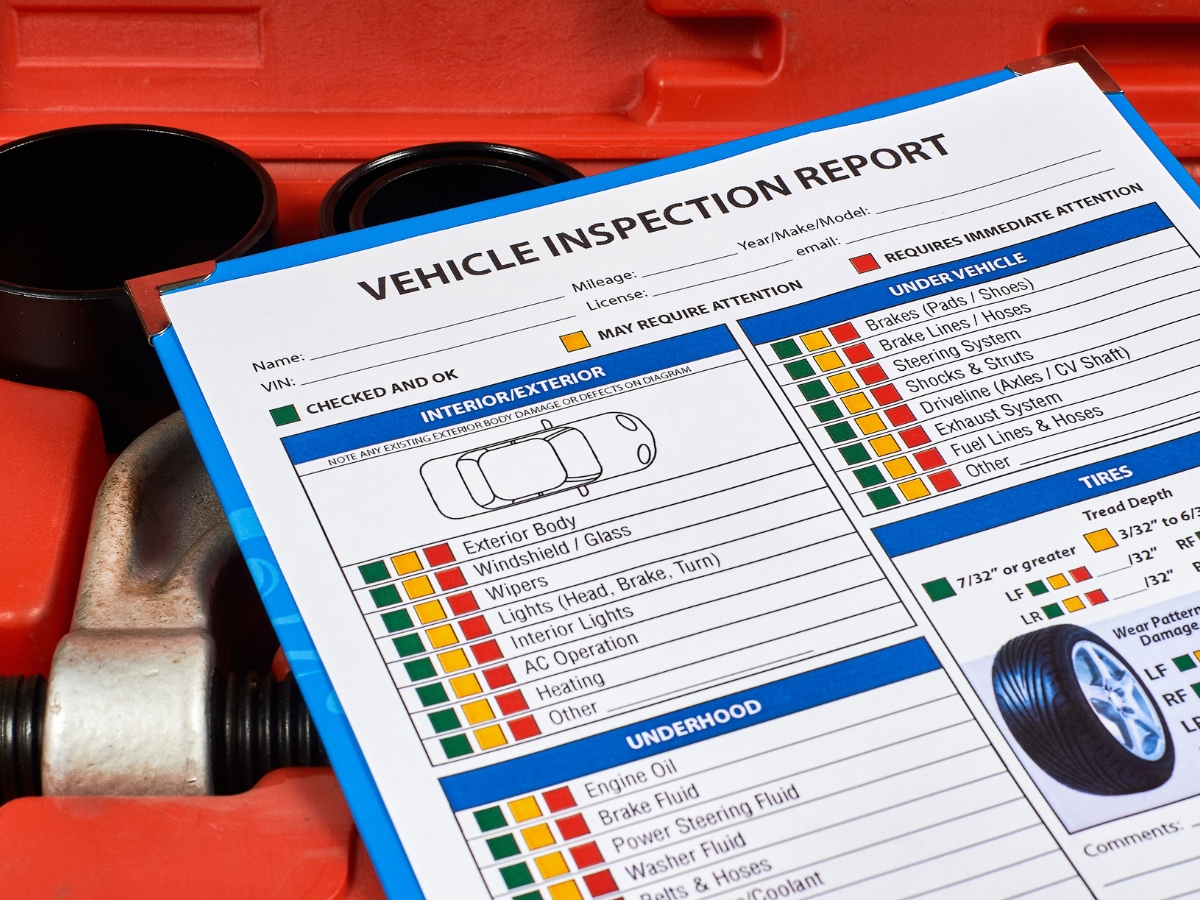
What Happens During a Texas Vehicle Inspection?
When you take your car for an inspection, the inspector will ask you for three things: proof of insurance, a valid driver’s license/photo ID, and payment of between $7 to $40, depending on the city and car type.
Once the proper documents are signed, the inspection will examine multiple vehicle parts. The whole process takes anywhere between 15 to 30 minutes.
The official Texas DPS page can provide exact information on what’s inspected. In general, though, expect these parts to be examined:
- (2x) Headlights
- (2x) Tail Lamps
- (3x) Stop Lamps
- Beam Indicator
- Brakes System (parking brake included)
- Exhaust Emission System (for gasoline cars only, age 2 years and above)
- Exhaust System
- Gas Caps (for cars over 2 years old)
- Horn
- License Plate Lamp
- Mirrors
- Motor/Serial/Vehicle Identification Number
- Rear Red Reflectors
- Seat Belts
- Steering
- Tires
- Turn Signals
- Wheel Assembly
- Window Tint
- Windshield Wipers
To avoid failure, it’s highly recommended that you conduct a full pre-inspection with the help of a professional before proceeding with your state vehicle inspection. This way, you won’t have to worry about returning to the inspection a second time.

How Much Does Vehicle Inspection Cost in Texas?
Vehicle inspection in Texas is fairly cheap compared to other states. Here’s a general breakdown of the costs:
- Two-year safety for new vehicles: $7.00
- One-year safety for old vehicles: $7.00
- Moped: $0.25
- Trailer: $7.00
- Motorcycle: $7.00
- Emissions-only vehicles in Travis, El Paso, and Williamson counties: $11.50
- Emissions-only vehicles (DFW/Houston): $18.50
- Safety emissions in Travis, El Paso, and Williamson Counties: $18.50
- Safety Emissions (DFW/Houston): $25.50
- Commercial vehicles: $40.00
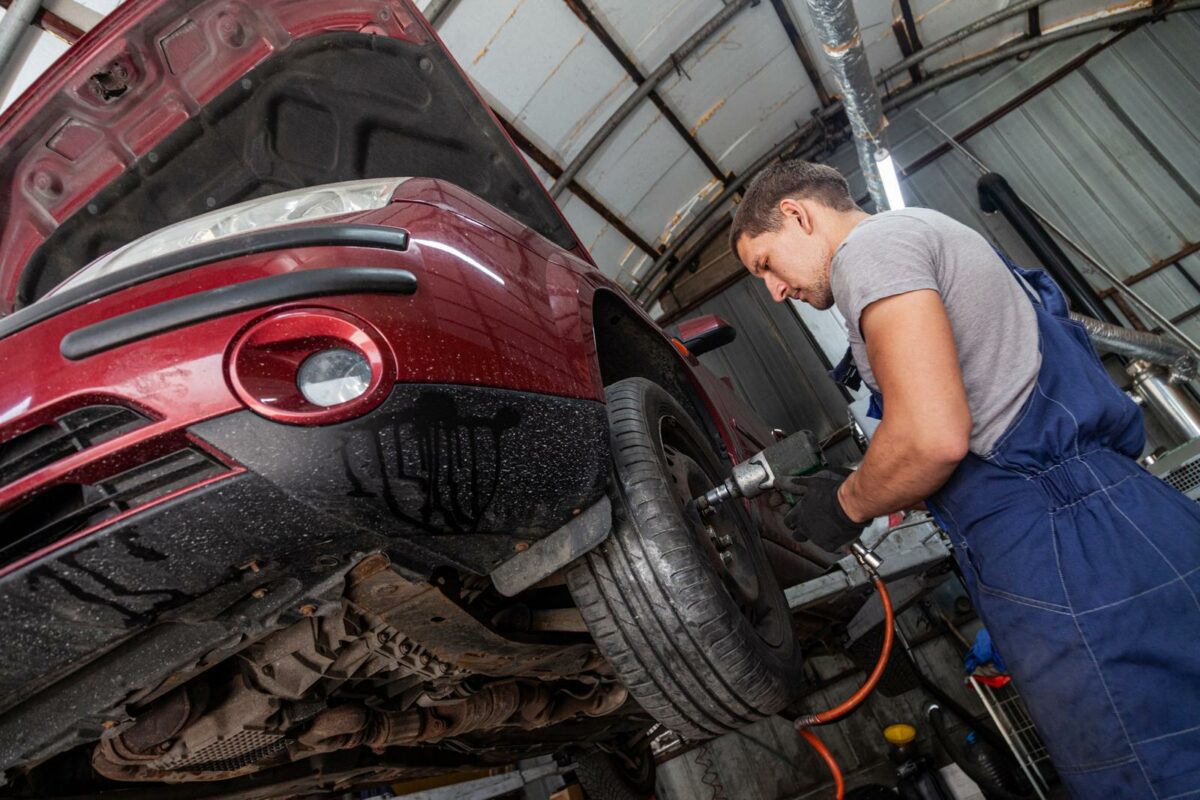
What Happens if You Fail an Inspection?
If you fail a vehicle at a Texas DMV, the inspector will place a glaring “failed inspection” label on your car’s windshield. The inspector will give you 20 days to fix the vehicle and get it reinspected.
They will give you a list of items to fix and the exact date you need to fix them. If you’ve failed the second inspection, the DMV will provide another 20-day opportunity to fix the vehicle.
But you’ll incur re-inspection fees if you’ve failed the third inspection. You’ll also need to inspect your vehicle every three months for the next two years.
Common Issues that Can Cause a Vehicle to Fail Inspection in Texas
Several common issues can cause a vehicle to fail its inspection in Texas. Addressing these issues before the inspection can save time and the inconvenience of re-inspection. Here are some of the most frequent reasons for inspection failure:
- Malfunctioning Lights: This includes headlights, tail lights, brake lights, and turn signals. A single non-functioning light can lead to a failed inspection.
- Brake Problems: Worn brake pads, damaged rotors, or malfunctioning brake systems are common reasons for failure. The parking brake will also be tested and must function properly.
- Tire Issues: Worn or damaged tires, especially those with tread depth below the legal limit, can cause a vehicle to fail. Uneven wear, bulges, or exposed cords are also reasons for failure.
- Windshield Wipers: Wipers that are ineffective in clearing the windshield or have torn rubber can lead to a failure, especially if they impair visibility.
- Cracked or Damaged Windshield: Significant cracks or chips, particularly in the driver’s line of vision, can result in a failed inspection.
- Check Engine Light: If the check engine light is on, it typically indicates an emissions or engine problem that needs to be addressed.
- Emission System Failures: For areas in Texas where emissions testing is required, any failure in the emission control system, including issues with the catalytic converter or the evaporative emission control system, can cause a failure.
- Exhaust System Issues: Leaks, excessive noise, or missing components in the exhaust system can lead to inspection failure.
- Faulty or Inoperative Seat Belts: All seat belts in the vehicle must be in good working order.
- Steering Mechanism Issues: Problems with the steering system, including excessive play in the steering wheel or malfunctioning power steering, can result in a failed inspection.
- Fluid Leaks: Significant leaks of fluids like oil, brake fluid, or transmission fluid can be grounds for failing the inspection.
- Horn Malfunction: The vehicle’s horn must work consistently and be audible from a reasonable distance.
- Missing or Faulty Gas Cap: A missing, loose, or damaged gas cap can lead to a failed emissions test.
- Suspension Problems: Issues with the vehicle’s suspension system can also be a reason for failure.
To avoid these common pitfalls, performing a thorough check of your vehicle and addressing any of these issues before heading for the inspection is advisable. Regular maintenance and timely repairs help pass the vehicle inspection and ensure your vehicle is safe and reliable on the road.
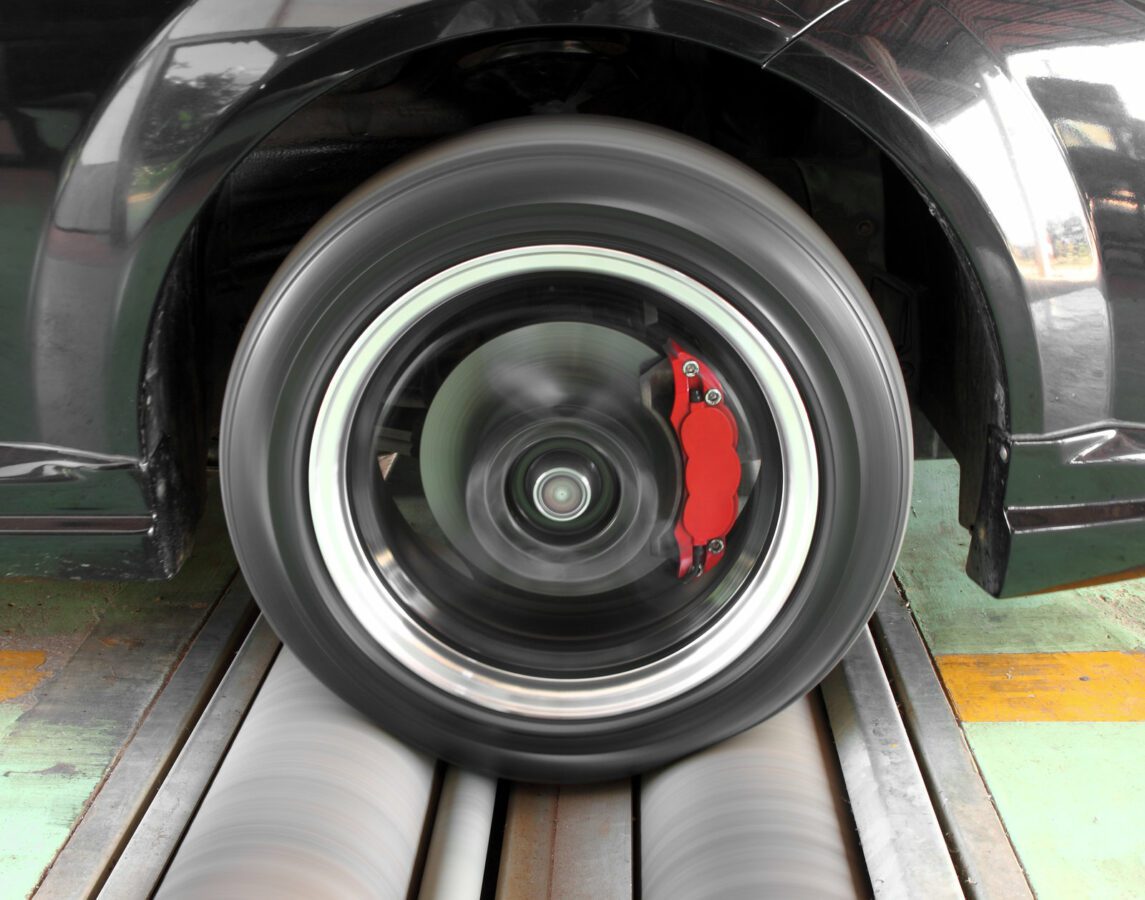
Reasons that Instantly Prevent You from Passing a Vehicle Inspection
Inspectors would instantly “fail” your vehicle if they deem it a hazard, a health risk, or a danger to the road and driver. These reasons include the following:
- Visible vehicle damage
- Leaking engine oil, brake, transmission, brake, or exhaust
- Unsafe tires
- Malfunctioning Check Engine light
- Inoperable parking breaks
- Excessive smoke coming from the engines
- Gas cap leaks
- Missing or non-removable gas cap
- Missing, malfunctioning, or damaged diagnostic connector
Consequences of Driving with An Expired Inspection
Driving with an expired vehicle inspection sticker in Texas can have several consequences, ranging from fines to legal complications. Here’s an overview of what you might face:
- Fines and Penalties: The most immediate consequence of driving with an expired inspection sticker is receiving a citation and a fine. The amount can vary based on the municipality and how long the sticker has expired. Typically, these fines can be substantial.
- Court Appearance: In some cases, you may be required to appear in court. This is especially likely if you have multiple offenses or if the inspection has expired for an extended period.
- Vehicle Impoundment: Although less common, there’s a possibility that your vehicle could be impounded for driving without a valid inspection sticker. This is more likely in conjunction with other violations.
- Increased Fines for Delay: You may face increased fines if you receive a citation and do not rectify the situation (i.e., get your vehicle inspected) within a certain period.
- Impact on Vehicle Registration: In Texas, your vehicle must pass an inspection before you can renew its registration. Driving with an expired registration, which might be the case if you can’t get your vehicle inspected, can lead to additional fines and penalties.
- Insurance Complications: Some insurance companies may view the lack of a valid inspection as a neglect of vehicle maintenance. This could impact your insurance rates or coverage, especially if you’re involved in an accident with an expired inspection sticker.
- Legal Record: Repeated offenses or failure to pay fines can lead to a mark on your legal record, which can have broader implications for your driving record and legal standing.
- Hassles with Selling the Vehicle: If you plan to sell your vehicle, an expired inspection sticker might deter potential buyers or reduce the vehicle’s value.
To avoid these consequences, getting your vehicle inspected as soon as possible once your sticker expires is advisable. Remember that the inspection is a legal requirement and a measure to ensure your vehicle is safe to operate on public roads.

Regulations for Commercial Vehicles Undergoing Inspection
In Texas, commercial vehicles are subject to specific inspection requirements and regulations to ensure they meet safety and environmental standards. Here’s an overview of these requirements:
- Annual Inspection: Commercial vehicles in Texas must undergo an annual inspection. This is similar to the requirement for personal vehicles but often involves a more comprehensive checklist due to the nature of commercial use.
- Federal Motor Carrier Safety Regulations: Vehicles that are used for interstate commerce must comply with the Federal Motor Carrier Safety Administration (FMCSA) regulations. This includes additional safety standards and inspection requirements.
- Emissions Testing: Depending on the county, commercial vehicles may be required to pass emissions testing. This is particularly true in urban areas with higher population densities, like Dallas-Fort Worth, Houston, and Austin areas.
- Weight Class Consideration: The inspection requirements may vary based on the weight class of the commercial vehicle. Heavier vehicles typically face more stringent inspection criteria due to the increased wear and tear they cause on roads and their potential for more significant damage in accidents.
- Documentation and Record Keeping: Commercial vehicle operators must maintain proper documentation, including logs of inspections, repairs, and maintenance. This documentation is crucial for compliance with both state and federal regulations.
- Specialized Inspections for Certain Types of Vehicles: Some commercial vehicles, like tankers, those carrying hazardous materials, or passenger buses, have additional inspection requirements due to their use and the potential risks involved.
- Brake System Inspection: Given the importance of effective braking in heavy vehicles, there’s often a focus on brake system inspection, including checking the air or hydraulic brakes, parking brake, and any brake system warning devices.
- Lighting and Reflectors: Commercial vehicles must have proper lighting and reflectors. This includes headlights, taillights, brake lights, turn signals, and reflective tape in specific areas of the vehicle.
- Tire and Wheel Inspection: Tires and wheels are critically inspected for tread depth, wear patterns, and overall condition to ensure safety, especially under heavy loads.
- Proof of Liability Insurance: Commercial vehicles must have proof of liability insurance that meets or exceeds the minimum requirements set by the state of Texas.
Commercial vehicle operators must be familiar with these requirements and ensure compliance to avoid fines legal issues, and ensure the safety of their operations. Regular maintenance and adherence to safety standards help pass inspections and contribute to roadways’ overall safety.
Next Step for Your Vehicle Inspection
It is best to contact certified inspection stations directly to arrange a vehicle inspection in Texas. Here’s a guide to help you find the right station, along with links and general contact details:
- Texas Department of Public Safety (DPS):
- Website: Texas DPS Vehicle Inspection
- General Contact: Use the website’s contact form or find contact numbers for local DPS offices.
- Texas Department of Motor Vehicles (TxDMV):
- Website: TxDMV Vehicle Inspection
- General Inquiry: (888) 368-4689 or (512) 465-3000
- Inspection Station Locator:
- You can use the TxDMV Inspection Station Locator to find certified stations near you. The locator provides addresses and phone numbers for each station.
- Chain Service Centers:
- Firestone Complete Auto Care: Store Locator
- Jiffy Lube: Service Center Locator
- Pep Boys: Store Locator
- Vehicle Dealerships:
- For inspections at dealerships, it’s best to contact your local dealership directly. Most dealership websites have a “Contact Us” section with phone numbers and email addresses.
- Local Auto Service Centers:
- Local directories or Google Maps can help you find nearby service centers. Simply search “vehicle inspection near me” on Google Maps.
- City or County Websites:
- Many city or county websites in Texas list local inspection stations. Check your city or county’s official website for more information.
When contacting an inspection station, it’s advisable to ask about the availability of appointments, waiting times, and any specific documents or requirements for the inspection. Additionally, checking online reviews or requesting recommendations from local community groups can help you choose a reliable service provider.
Driving Inspection FAQs
Can you drive with a “failed inspection” sticker in Texas?
You can drive with a rejection sticker in Texas, but only to drive your vehicle home and to a repair facility. You can drive with the rejection sticker for 15 days from the inspection date. If it passes the 15-day threshold, you’ll have to pay a fine of between $200 to upwards of $500.
Do you have to pay for the second inspection if you failed the first?
No, you don’t have to pay for re-inspection if the first inspection fails, as long as you take your vehicle for the second inspection within 15 days for a free re-test. If you present the vehicle after 15 days or take your vehicle to a different station, you won’t be eligible for the free re-test.
Is there a grace period for car inspection in Texas?
No, there’s no grace period on inspections. If you drive around with an expired inspection, you’ll likely incur fees of between $200 and $500.
How long do I have to register my vehicle in Texas after moving?
After moving to Texas, you must register the vehicle within 30 days. You also have 90 days to obtain a Texas driver’s license. Otherwise, you’ll be given penalty fees.
References
- Common Causes of Inspection Failure: https://dmv.dc.gov/service/common-causes-inspection-failure%E2%80%94personal-vehicles
- Inspection Criteria for the Annual Safety Inspection: https://www.dps.texas.gov/rsd/vi/inspection/inspectionCriteria.aspx
Share the post "Texas Vehicle Inspection (Good For/Fails For)"
Christian Linden is a seasoned writer and contributor at Texas View, specializing in topics that resonate with the Texan community. With over a decade of experience in journalism, Christian brings a wealth of knowledge in local politics, culture, and lifestyle. He holds a Bachelor's degree in Communications from the University of Texas. When he's not writing, Christian enjoys spending weekends traveling across Texas with his family, exploring everything from bustling cities to serene landscapes.











